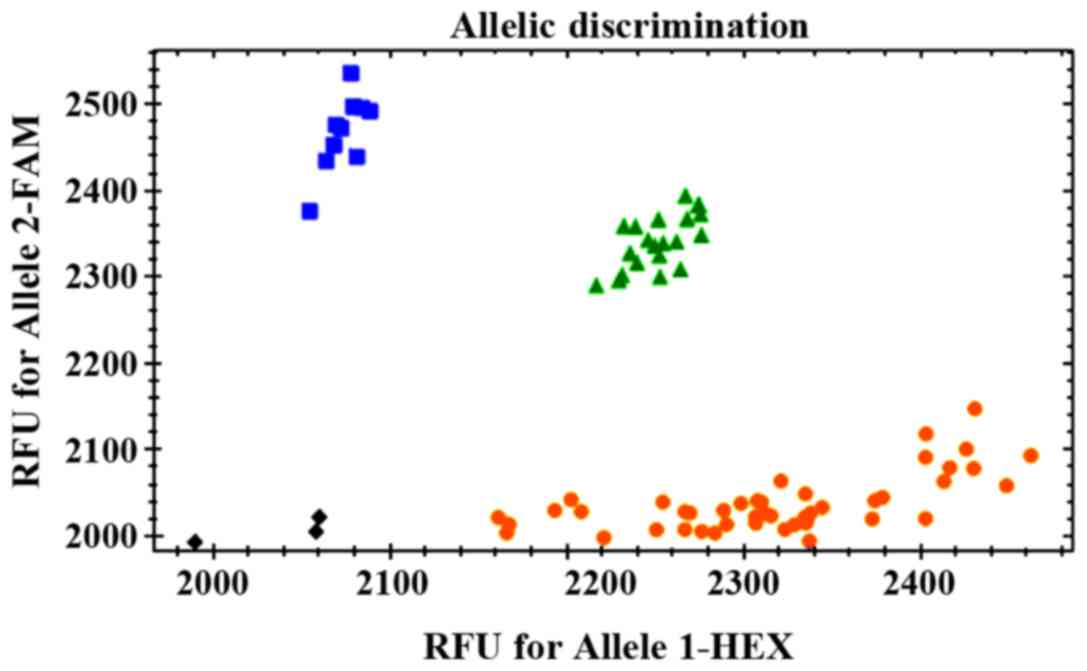Association between GDF5 single nucleotide polymorphism rs143383 and lumbar disc degeneration
- Authors:
- Published online on: June 29, 2018 https://doi.org/10.3892/etm.2018.6382
- Pages: 1900-1904
-
Copyright: © Wang et al. This is an open access article distributed under the terms of Creative Commons Attribution License.
Metrics:
Total
Views: 0 (Spandidos Publications: | PMC Statistics:
)
Total PDF Downloads: 0 (Spandidos Publications: | PMC Statistics:
)
Abstract
The association between growth differentiation factor 5 (GDF5), single nucleotide polymorphism (SNP) rs143383 and lumbar disc degeneration (LDD) was investigated. A total of 210 patients with LDD (observation group) and 320 patients without lumbar diseases (control group) diagnosed in Shanghai General Hospital of Nanjing Medical University from August 2013 to March 2017 were randomly selected. Then, deoxyribonucleic acid (DNA) was extracted from the blood of each patient, and Taq-man fluorescent quantitative polymerase chain reaction (qPCR) technique was used to detect rs143383 in GFD5 gene. The frequency of different genotypes in observation group and control group was counted, and the associations between different SNP genotypes and the incidence of LDD were analyzed. Good genotyping results were found in both LDD patient group and control group. There were no significant differences in distribution frequency of TT and TC genotypes at site rs143383 between LDD patient group and control group (P>0.05), but the distribution frequency of CC genotype at site rs143383 in LDD patient group had a statistically significant difference from that in control group (P<0.05). In dominant models, odds ratio (OR) of (TC+CC/TT) was 1.195 (P=0.532). In recessive models, OR of (CC/TT+TC) was 4.333 (P=0.028). In co-dominant models, ORs of (TC/TT) and (CC/TT) were 0.967 and 4.43, respectively (P=0.99). The differences in 3 genotypes showed no statistical significance among different pathological grades (Grade I to V) (χ2=1.034, P=0.998), and there was no statistically significant difference in T and C (χ2=0.012, P=0.999). Pathological grades in dominant models, recessive models and over dominant models were analyzed, and no statistically significant difference was found (P>0.05). In conclusion, CC mutant type at rs143383 in GDF5 gene has a strong association with the incidence of LDD, and a high prevalence risk, but it has no evident correlation with pathological grades.












